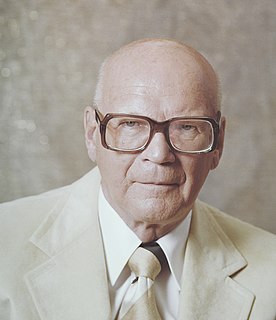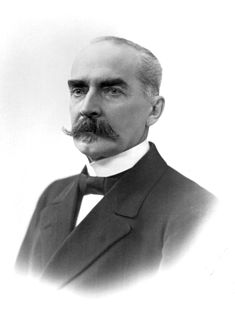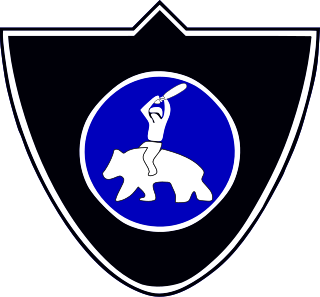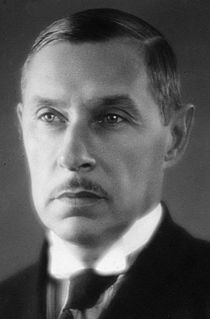
Urho Kaleva Kekkonen, often referred to by his initials UKK, was a Finnish politician who served as the eighth and longest-serving President of Finland from 1956 until 1982. He was the third and most recent president from the Agrarian League/Centre Party. As head of state for nearly 26 years, he dominated Finnish politics, held a large amount of power, won his later elections with little opposition and has often been classified as an autocrat. Nevertheless, he remains a respected figure.

Kyösti Kallio was a Finnish politician of the Agrarian League who served as the fourth President of Finland from 1937–1940. He was the first President of Finland to resign and the only president to die in office.

Kaarlo Juho Ståhlberg was a Finnish jurist and academic, which was one of the most important pioneers of republicanism in the country. He was the first President of Finland (1919–1925) and a liberal nationalist.

Erkki Sakari Tuomioja is a Finnish politician and a member of the Finnish Parliament. From 2000 to 2007 and 2011 to 2015, he served as the Minister for Foreign Affairs. He was President of the Nordic Council in 2008.
The Centre Party, officially the Centre Party of Finland, is an agrarian political party in Finland.

Patriotic People's Movement was a Finnish nationalist and anti-communist political party. IKL was the successor of the previously banned Lapua Movement. It existed from 1932 to 1944 and had an ideology similar to its predecessor, except that IKL participated in elections, although with limited success.

Karl Harald Wiik (1883-1946) was a Swedish-speaking Finnish Social Democratic (SDP) leader. Elected to parliament numerous times between 1911 and the time of his death and Secretary of the SDP for more than a decade, Wiik is remembered as one of six radical SDP members of parliament expelled from the SDP in the aftermath of the Winter War with the Soviet Union.
Parliamentary elections were held in Finland on 17 and 18 March 1945. The broad-based centre-left government of Prime Minister Juho Kusti Paasikivi remained in office after the elections.
Parliamentary elections were held in Finland on 6 and 7 July 1958. The communist Finnish People's Democratic League emerged as the largest party, but was unable to form a government.
Parliamentary elections were held in Finland on 1 and 2 July 1936. Following the election Prime Minister Toivo Mikael Kivimäki of the National Progressive Party was defeated in a confidence vote in September 1936 and resigned in October. Kyösti Kallio of the Agrarian League formed a centrist minority government after Pehr Evind Svinhufvud refused to allow the Social Democrats to join the government. After Svinhufvud's defeat in the February 1937 presidential election, Kallio took office as the new President in March 1937, and he allowed the Social Democrats, Agrarians and Progressives to form the first centre-left or "red soil" Finnish government. Aimo Cajander (Progressive) became Prime Minister, although the real strong men of the government were Finance Minister Väinö Tanner and Defence Minister Juho Niukkanen (Agrarian).
Parliamentary elections were held in Finland on 1 and 2 July 1948.
Parliamentary elections were held in Finland on 15 and 16 March 1970.
Parliamentary elections were held in Finland between 1 and 3 March 1919. The Social Democratic Party emerged as the largest in Parliament with 80 of the 200 seats. Voter turnout was 67.1%.
The Nordic agrarian parties, also referred to as Nordic Centre parties, Scandinavian agrarian parties or Agrarian Liberal parties are agrarian political parties that belong to a political tradition particular to the Nordic countries. Positioning themselves in the centre of the political spectrum, but fulfilling roles distinctive to Nordic countries, they remain hard to classify by conventional political ideology.

Early parliamentary elections were held in Poland on 21 October 2007, after the Sejm voted for its own dissolution on 7 September. The election took place two years before the maximum tenure of four years, with the previous elections having been in September 2005. The early elections were a result of serious allegations of massive corruption on the part of Andrzej Lepper, leader of the Self-Defense of the Republic of Poland, whose party served as a junior coalition partner to the government of Prime Minister Jarosław Kaczyński. All 460 seats in the Sejm and all 100 seats in the Senate were up for election.

The Old Student House is the former student house of the Student Union of the University of Helsinki, located in central Helsinki, Finland, near the crossing of Aleksanterinkatu and Mannerheimintie.

The New Student House, originally named Osakuntatalo, is the current student house of the Student Union of the University of Helsinki, located in central Helsinki, Finland, at Mannerheimintie 5, right next to the Old Student House. It is part of the Kaivopiha building complex owned by the student union. The new student house houses the central office of the student union, the Ylioppilaslehti office, and premises for many nations and student organisations; part of the building has also been leased for third-party business and office use.

The Social Democratic Party of Finland, shortened to the Social Democrats and commonly known in Finnish as Demarit, is a social-democratic political party in Finland. It is currently the largest party in the Parliament of Finland with 40 seats.

Two-stage presidential elections were held in Finland in 1956. On 16 and 17 January the public elected presidential electors to an electoral college. They in turn elected the President. The result was a victory for Urho Kekkonen, who won on the third ballot over Karl-August Fagerholm. The turnout for the popular vote was 73.4%. Kekkonen had been Juho Kusti Paasikivi's heir apparent since the early 1950s, given his notable political skills for building coalitions, bargaining, risk-taking and adjusting his tactics, actions and rhetoric with regard for the prevailing political wind. On the other hand, his behaviour and political tactics, including sharp-tongued speeches and writings, utilization of political opponents' weaknesses, and rather close relations with the Soviet leaders, were severely criticized by several of his political opponents. Kekkonen's colourful private life, including occasional heavy drinking and at least one extramarital affair, also provided his fierce opponents with verbal and political weapons to attack him. Several other presidential candidates were also criticized for personal issues or failures. Despite all the anti-Kekkonen criticism, his political party, the Agrarians, succeeded for the first time in getting the same share of the vote in the presidential elections' direct stage as in the parliamentary elections. President Paasikivi had neither publicly agreed nor refused to be a presidential candidate. He considered himself morally obliged to serve as President for a couple of more years, if many politicians urged him to do so. Between the first and second ballots of the Electoral College, one National Coalitioner phoned him, asking him to become a dark-horse presidential candidate of the National Coalitioners, Swedish People's Party and People's Party (liberals). At first, Paasikivi declined, requiring the support of Social Democrats and most Agrarians. Then he moderated his position, but mistakenly believed that he would receive enough Social Democratic, Agrarian and Communist and People's Democratic electors' votes to advance to the crucial third ballot. This did not happen, because all Agrarian electors remained loyal to Kekkonen, all Social Democratic electors remained loyal to Fagerholm, and the Communist and People's Democratic electors split their votes to help Fagerholm and Kekkonen advance to the third ballot. The bitterly annoyed and disappointed President Paasikivi publicly denied his last-minute presidential candidacy two days later. Kekkonen was elected President with the narrowest possible majority, 151 votes to 149. For several decades, the question of who cast the decisive vote for him has been debated among Finnish politicians and some Finnish journalists.

Reinhold Konstantin Svento was a Finnish politician who served as a speaker of the Finnish Social Democratic Party between 1922 and 1945 and MP from the Finnish People's Democratic League 1945-1948, 1944-1948 as II Foreign Minister in three Governments and 1948-1951 as Envoy of Finland to Bern. Svento, also a member of the Helsinki City Council, also acted as a five-times electoral in presidential elections.













